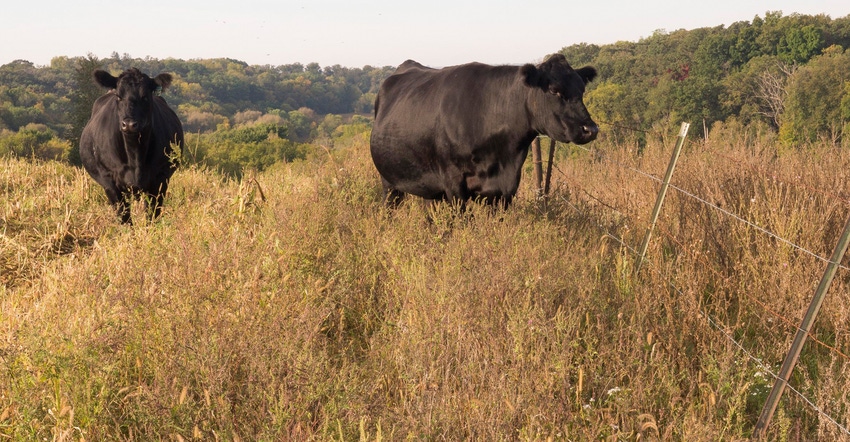January 5, 2017

Being prepared for any event will reduce your level of stress. Preparing for the upcoming calving season will help reduce the stress that comes with one of the most intense times of the year for a cow-calf producer. Considering the following tips to plan and prepare can help reduce calf loss and put more profit in your pocket.
Nutrient management
The last two months of a cow’s pregnancy is when most of the unborn calf's growth occurs. Feeding an adequate diet to meet the cow's basal metabolism, activity, growth, pregnancy and lactation requirements is needed. Heifers are still growing and have a slightly higher nutrient requirement than mature cows. Consider keeping heifers separated from mature cows and feeding for their requirements.
Changing your feeding times two to three weeks before anticipated calving can be beneficial for observations. A convincing study of 1,331 cows on 15 farms in Iowa demonstrated that cows fed once daily at dusk resulted in 85% of the calves being born between 6 a.m. and 6 p.m. The advantage of checking heifers and cows during the daylight may seem obvious, but also consider that radiant heat from the sun reduces cold stress on that newborn and increases early colostrum consumption.
Keep heifers and cows in pastures close by where they can be checked often. Access to a squeeze chute or headgate, a calving pen to assist in a calf delivery, and a warming box for newborns when weather is a factor are all things that should be considered.
Calf processing
Maternal instincts kick in during the calving process. Cows and heifers can be very protective and aggressive toward any approaching creature. Leaving the dog in the truck and working with another person to process calves is a good safety measure. Taking a vehicle or UTV into calving pastures provides a working area and some protection if the cow objects to your calf processing.
Making sure the calf is breathing is top priority right after birth. Clear the nose and mouth of any mucous or other obstructions. Encourage healthy breathing by tickling the nostrils with grass or straw to initiate a sneeze. Do not hold the calf upside down, as the weight of the internal organs on the diaphragm may decrease lung expansion.
Ideally, calves will stand and nurse colostrum within the first 30 minutes after birth to receive the passive immune-building function. Wet or curled hair around the teats, along with a shiny appearance, indicates the calf has nursed. The calf should be fed colostrum if it has not had the opportunity to nurse within the first two hours after birth.

READY TO HELP: Gretchen Kamps of Belmont keeps a well-bedded pen ready in case she needs to assist with a birth. This calf happened to be backward, with its feet underneath it. Kamps' readiness to help with difficult calving kept this calf alive.

Recording the calf's birth date, sex, weight and identification is a good start to recordkeeping. Consider recording dam ID, sire ID, calving ease score, cow body condition score and other notes to be used for future herd performance improvement. A simple, pocket-sized calf record book is a convenient tool. Phone apps are available, as well. Calf Book is a free app for collecting calving data; it also can generate reports.
Take-home message
Your management techniques before, during and after the calving season significantly impact your cow-calf operation. Organization, accurate records and proper calf management improve calf health and productivity, which ultimately means more profit. Using proven management techniques will help ensure you have a successful calving season.
For more about the beef industry, visit the Wisconsin Beef Information Center at fyi.uwex.edu/wbic, or contact your local University of Wisconsin Extension office.
Stalsberg is the Extension dairy and livestock agent for Grant and Lafayette counties. This column is provided by the University of Wisconsin Extension’s Wisconsin Beef Information Center. Learn more at fyi.uwex.edu/wbic.
About the Author(s)
You May Also Like




